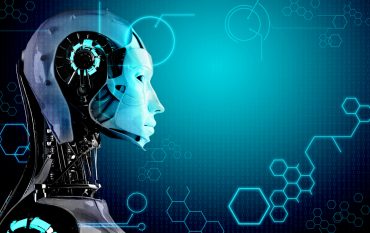
Generative AI and partnerships are seen as keys to helping businesses future-proof their operations to meet changing market requirements.
To stay ahead of change, leaders today must continuously future-proof their businesses. That was the theme of the recent SAP Sapphire conference’s keynote led by SAP CEO Christian Klein.
Klein noted that SAP helps in this area by offering modular applications for each business function, like HR, procurement, finance, supply chain, and sales. “Our business technology platform is the glue that holds everything together to deliver and integrate a best-of-suite portfolio to run end-to-end business process because no company can afford to run in silos,” he said.
The platform provides the extension capabilities IT needs to remove the complexity in current IT stacks. And it delivers continuous innovation in the cloud without time-consuming upgrades.
One innovation on everyone’s minds these days is artificial intelligence (AI).
For 50 years, SAP’s software has been running the world’s most intensive business processes. “This is why we are convinced that embedding AI in SAP’s software will deliver enormous value for your business,” said Klein. “Today, we have already embedded AI in many of our applications being used by over 20,000 customers.”
For example, in SAP’s finance solution, AI helps to predict and safeguard financial performance by analyzing a company’s pipeline, workforce, and other P&L drivers. “We deliver up many AI use cases that boost business process automation and increase productivity by another 15%,” said Klein.
See also: SAP Strengthens S/4HANA for the Midmarket
Generative AI enters the picture
“Now we see the incredible potential to take AI to the next level,” said Klein. “With generative AI, we will increase the productivity of every end user by changing the way people work with our software.” For example, the software will be able to answer any business-related question and recommend actions to improve a company’s performance.
The game-changing potential of generative AI to businesses is of concern to many these days. SAP has increased its R&D investment to develop additional AI use cases. To start, SAP has been embedding generative AI and intelligent chatbots in its products. That increases the productivity of end users working with SAP software. And it opens up new capabilities for all business functions. And at the same time, it is entering technology partnerships to expand its AI offering.
How to future-proof HR
SAP solutions obviously are used in a wide variety of critical business operations. To look at the way AI and strategic partnerships can play a role in future-proofing endeavors, Klein gave some examples from HR.
HR is about recruiting and scaling. The day before the conference, SAP and Microsoft made a generative AI announcement in this arena. Both recruiting and scaling HR operations can benefit from AI. To that end, SAP and Microsoft teamed to bring SAP human experience management data together with Microsoft 365 Copilot, which makes use of generative AI large language models (LLMs) to assist its users.
Bringing that data together with this Copilot and adding AI capabilities to the data can completely change how human capital management and human experience management are done across a business.
Such applications of AI to HR can help businesses more easily or efficiently find candidates to fill open positions. But that alone is not enough in modern business environments.
Beyond hiring, HR must work to upskill and re-skill a company’s employees to meet ever-changing and new challenges. Here again, AI can play a role.
During the keynote, an example was given where an existing employee was interested in a job posting. To improve his chance of getting the position, the employee decides he wants to take some learning courses to sharpen his skills. Within Microsoft Viva Learning, the employee asks Copilot for ideas on how to improve his skills in a specific area. A hyper-personalized learning recommendation is generated, and a company-recommended learning path comes up right with a list of the courses to take.
The interplay between the multiple Microsoft and SAP solutions provides HR with a real-time understanding of the skills across its workforce. That, in turn, provides greater transparency for future-proofing workforce planning. With the aid of AI, all of this is built into the flow of work allowing skills management to happen at scale.
Automation helps future-proof operations
Many topics were covered in the keynote, but the final point focused on automation. Julia White, SAP’s Chief Marketing and Solutions Officer, noted that enterprise automation uses AI, event-driven architectures, RPA, reusable content, and integration to automate as many tasks as possible. She noted that only SAP has the entire technology stack to fully automate end-to-end business processes. Furthermore, SAP offers pre-built automation for numerous activities and business functions.
Klein built on that thought to close the keynote. He noted that SAP is “united in our ambition to use technology to drive positive change. Today, we have seen that conquering the mountains we face requires the right technology.”
He noted that as the famous climber once said, “Better we raise our skill than lower the climb.” At SAP, “we are not lowering the climb; we are raising the skills for every role in every line of business to future-proof your business for whatever mountain you need to climb next.”





























